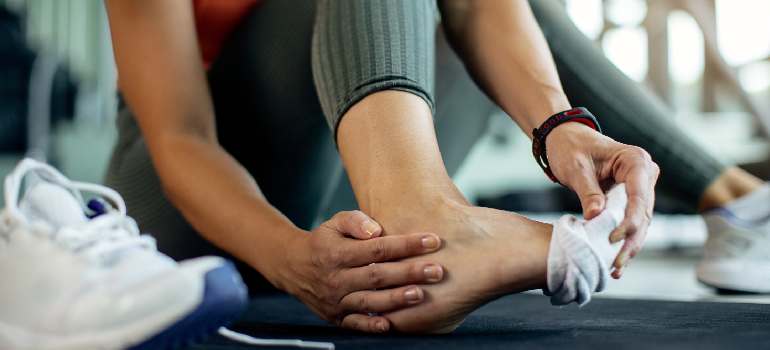Physiotherapy plays an important role in the treatment of sports injuries. A physiotherapist is a trained healthcare professional who specializes in the assessment, diagnosis, and treatment of injuries and conditions that affect the musculoskeletal system. When a sports injury occurs, a physiotherapist can work with the athlete to develop an individualized treatment plan. The first step in the treatment process is to assess the injury and determine the underlying cause. This may involve a physical examination, diagnostic imaging, and other tests.
Sports injuries can occur due to a wide range of factors, including poor technique, overuse, or sudden impact. Physiotherapy is an effective way to help athletes recover from injuries and regain their strength, mobility, and flexibility.
Once the cause of the injury has been identified, the physiotherapist can begin treatment. Treatment may include a combination of exercises to improve strength, flexibility, and range of motion, as well as manual therapies such as massage and mobilization. The goal of physiotherapy in the treatment of sports injuries is to help the athlete regain function and return to their sport as quickly and safely as possible. By working closely with the athlete, the physiotherapist can tailor the treatment plan to the individual’s needs and ensure the best possible outcome.
Physiotherapy treatment for sports injuries is to assess the injury and develop a treatment plan. The physiotherapist will evaluate the athlete’s physical condition and identify any areas of weakness or imbalance that may contribute to the injury. They will then create a treatment plan that includes exercises to improve strength, flexibility, and range of motion. In addition to the above, physiotherapy may also involve modalities such as electrical stimulation, ultrasound, and ice or heat therapy to reduce inflammation and pain. The physiotherapist may also provide advice on proper rest, nutrition, and lifestyle modifications to facilitate healing and prevent further injury. Physiotherapy may also include other treatments such as manual therapy, which involves the use of hands-on techniques to relieve pain and improve movement. This may include massage, joint mobilization, and stretching. In addition, physiotherapy may involve the use of modalities such as heat or cold therapy, ultrasound, or electrical stimulation to help reduce pain and inflammation.
Here are some ways in which physiotherapy can be used in the treatment of sports injuries:
Assessment: A physiotherapist can assess the nature and severity of the injury and create a personalized treatment plan based on the athlete’s specific needs.
Pain management: Pain is a common symptom of sports injuries, and physiotherapy can help manage it through the use of various techniques such as ice therapy, heat therapy, and massage.
Range of motion: Sports injuries can limit an athlete’s range of motion, and physiotherapy can help restore it through targeted exercises and stretches.
Strengthening: Injuries can weaken the affected area, and physiotherapy can help strengthen it through exercises and resistance training.
Balance and coordination: Physiotherapy can help improve an athlete’s balance and coordination, which can help prevent future injuries.
Rehabilitation: Physiotherapy can be used as part of an athlete’s rehabilitation program, helping them return to their sport as quickly and safely as possible.
One of the goals of physiotherapy in the treatment of sports injuries is to help athletes return to their sport as quickly and safely as possible. This may involve a gradual progression of exercises and activities to ensure that the athlete is ready to return to their sport.
Overall, physiotherapy is an essential component in the treatment of sports injuries. It can help athletes recover from their injuries and return to their sport with improved physical condition and reduced risk of re-injury





